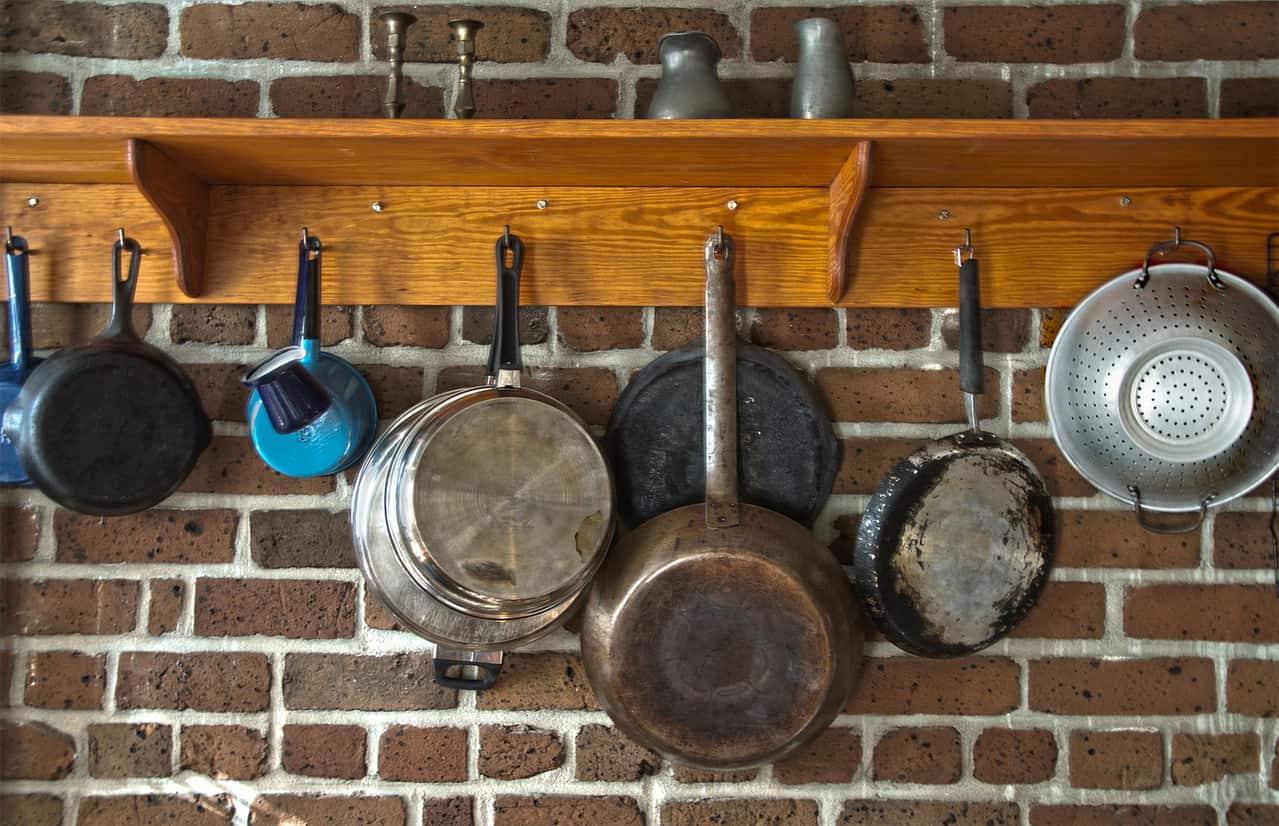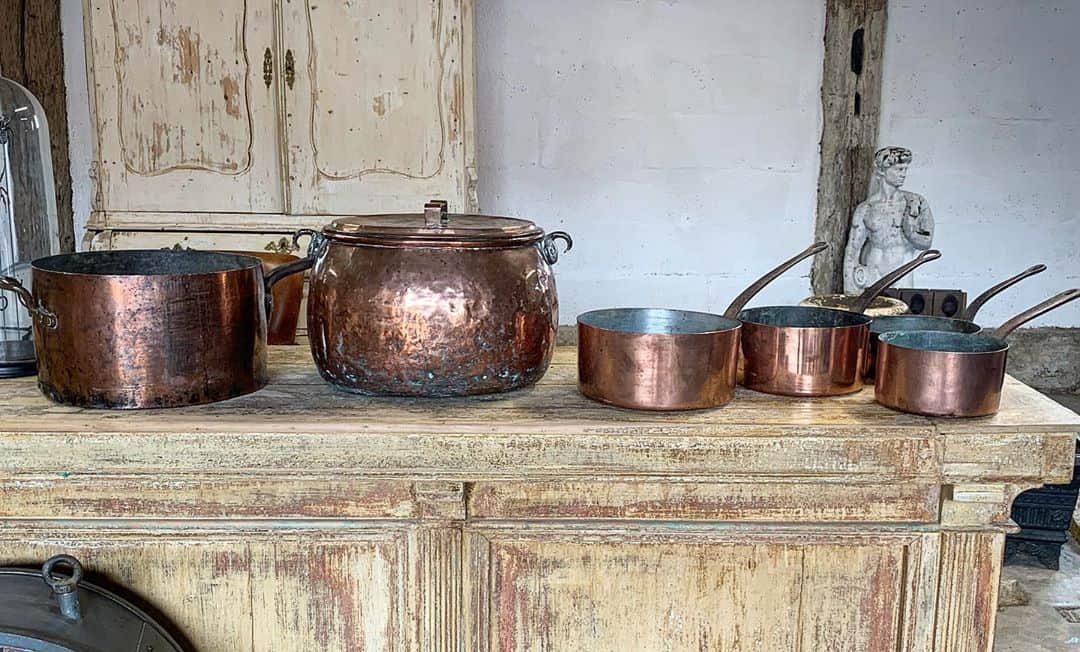Among many cookware pieces, such as the most commonly used frying pan and a grill pan, a saucepan occupies a special place. It is one of the most useful and practical kitchen items I have ever had, and I wholeheartedly recommend it to you.

You can use this useful cookware to prepare a variety of dishes, including sauces, pastes, and omelets. Plus, this pan is safe to use on the stovetop and in the oven, but it should not be used in the microwave. So, let’s take a closer look at what is a saucepan exactly?
This article will cover
- The Saucepan Shape
- The Saucepan Materials
- The Advantages of the Saucepan
- The Disadvantages of the Saucepan
- Saucepan vs. Other Types of Cookware
- How to Choose the Right Saucepan?

The Saucepan Shape
The typical shape of the saucepan is circular, with high sides and a long handle. Nowadays, you can find the model with or without a lid on the market.
Covered models usually have a characteristic lid made of glass resistant to high temperatures. However, you can also purchase a metal lid of the same size as the saucepan if you prefer that way.
However, there are many forms of this particular cookware, and their shape primarily depends on the pan purpose. You can find rectangular and square saucepans, but I have also seen some weird shapes in various sizes.
The Saucepan Materials

Although there are saucepans of different materials, most of them are made of metal with a copper-coated bottom. Its purpose is to distribute the heat evenly through all the ingredients while you prepare the meal.
Like other types of the non-stick pan, the saucepans have a coating that prevents sticking food to its surface.
In some cases, the handles and lids are made of the same material as the saucepan. However, if you buy a model with glass lid, you need to check if the manufacturer uses tempered glass to make it.
Only such a lid can withstand high temperatures during cooking. Also, you should pick out the one with a valve that allows undisturbed evaporation.
Before you shop, you should consider the advantages and downsides of the various materials from which your new saucepan could be made:
Copper – Many professional chefs recommend the copper saucepan as the best heat conductor.
Copper cookware is often lined with stainless steel to prevent the copper from reacting with acidic foods, which could cause copper to leach into your meals. While you can use the copper saucepan in the oven, this material is not safe in a dishwasher.

Aluminum – Even though it is the second-best heat conductor, aluminum can warp or dent easily. Therefore, the manufacturers often combine it with stainless steel.
The advantage of this material is that it comes with a non-reactive scratch-resistant finish.
Cast iron – You can use most cast iron pans in the oven, but they are not safe in the dishwasher.
The same goes for the saucepans made of this material. You can use this type of pan on the induction range cooker. The plus is that this material is heated slowly and the heat spreads equally.
Stainless steel – These saucepans are durable and rust-resistant. They don’t conduct heat as well as the ones made of copper, but they work well with induction cooktops.
Plus, you can safely use them for broiling different meals, put them in the oven, and wash them in a dishwasher.

The Advantages of the Saucepan
If you need a versatile pan, the saucepan is your choice. Its primary purpose is in the preparation of different sauces. However, there are countless dishes you can cook in this cookware and many ways to use it.
The saucepan is recognizable by its high sides, which play a dual role during use. First, the high walls of the saucepan allow the preparation of a larger amount of food. On the other hand, they also create a larger contact surface with food and allow even heat dissipation during cooking.
For this reason, the saucepan is ideal for preparing pasta or hot chocolate. You can also use it for braising, boiling water, and cooking beans. Plus, once you purchase this dish, you won’t need a frying pan for deep frying meat and fish.

The Disadvantages of the Saucepan
Although the saucepan is a handy cooking dish, it has its drawbacks, as well. One of the common objections of those who have it is its limited volume.
Namely, if you prepare dinner for more than two people, you can use this cookware for making the sauce but not for another dish. In that case, you need a bigger pot.
Due to this cookware’s shape, you won’t be able to use the hob for something else at the same time. Preparing food in the saucepan means constantly stirring because you risk the food burns and sticks in the corners.
Keep in mind that your meal’s taste will be spoiled entirely if even the smallest part of the food burns. So, it would help if you stirred it constantly. At the same time, the sides are almost at right angles, making it difficult to reach the content with a wooden spatula.
For the same reason, cleaning a saucepan, which doesn’t go into the dishwasher, is a demanding job that involves dipping and a lot of scrubbing. Depending on the saucepan material, you can’t use a scrubbing wire to avoid damaging the saucepan glaze and protective coatings.
The last disadvantage of the saucepan is that it has only one long handle. Therefore, you may find it difficult to transfer this heavy pan full of hot food to a table with one hand or quickly remove it from the hob when needed.
Saucepan vs. Other Types of Cookware

When you start equipping your kitchen with cookware, you can see that saucepan has many similarities with some other pans and pots. Keep in mind that a well-chosen saucepan can replace some of the other dishes and save you space on the shelf.
To know what you actually need and what you can avoid, you should compare the saucepan with other cookware.
Saucepan vs. saucier – Although they are very similar in shape and purpose, the saucepan differs from the saucier in its right angles. The saucier has rounded corners, which make it easier to use the whisk while cooking. Plus, the food can quickly burn if you are not careful because of the saucepan’s upright sides.
Saucepan vs. pot – You can use a pot when you prepare dishes that need more prolonged cooking. For this reason, the pot is usually much wider and has a larger volume than the saucepan. On the other hand, the saucepan is ideal for quickly prepared dishes, such as pasta.
Saucepan vs. frying pan – A frying pan has shallow sides, so you can use it to prepare an omelet or some other meal that requires a small amount of oil. The saucepan can entirely replace this cookware because you can use it for the same purpose. However, frying pans are generally better for making pancakes, as the shallow sides make it easier to flip the pancakes.
Saucepan vs. saute pan – A saute pan is kitchen cookware with a broad base that combines the saucepan and frying pan. That makes it highly suitable for sauteing and searing.
How to Choose the Right Saucepan?

If you want to change your dishes completely, kitchen sets that contain several pots and pans are an excellent choice. A quality kitchen set has at least five pieces, but it can also include over ten items. However, their price can reach several hundred dollars, so many people decide to purchase only the pots they need.
On the other hand, if you only need the saucepan, you may wonder how to pick out the right one. For a start, there are high chances that you won’t choose the copper or the cast iron saucepan if you have a dishwasher. If you want to avoid washing dishes by hand, buy the stainless-steel model.
Next, you need to determine your budget on time. Remember that you probably need more than one saucepan if you cook every day. The number of cookware will depend on the amount and type of food you prepare daily. The quality set of three saucepans costs at least $100.
Standard sets mostly have three saucepans of different sizes, which are useful for various purposes:

- The smallest one has 6.3 inches (16 cm) in diameter
- The medium one has 7.1 inches (18 cm) in diameter
- The larger one has 7.9 inches (20 cm) in diameter
You can quickly reheat vegetables or canned soup in the smallest one. The medium-sized saucepan is perfect for cooking rice, stewing fruit, and preparing the sauce. Finally, the largest piece is excellent to make risotto or larger quantities of mashed potatoes.
Summary
The saucepan is handy kitchen cookware you can use every day, whether you need to pre-heat a dish or cook dinner for your family. Depending on the material, you can safely use it on the stovetop and in the oven, but saucepans should not be used in the microwave. However, it would help if you avoided washing most of them in the dishwasher.
Despite several drawbacks, you should buy this durable, easy-to-use cookware since the right set of three different sizes can successfully replace most other pots and pans.
The saucepan has many interesting uses, watch this video to get 5 simple saucepan life hacks.

Michael Johnson is the founder of Pan Mastery, Inspired by his blacksmith grandfather’s legacy has a deep appreciation for hand-crafted pots and pans, he provides invaluable guides, reviews, and recipes to enhance your culinary journey.
